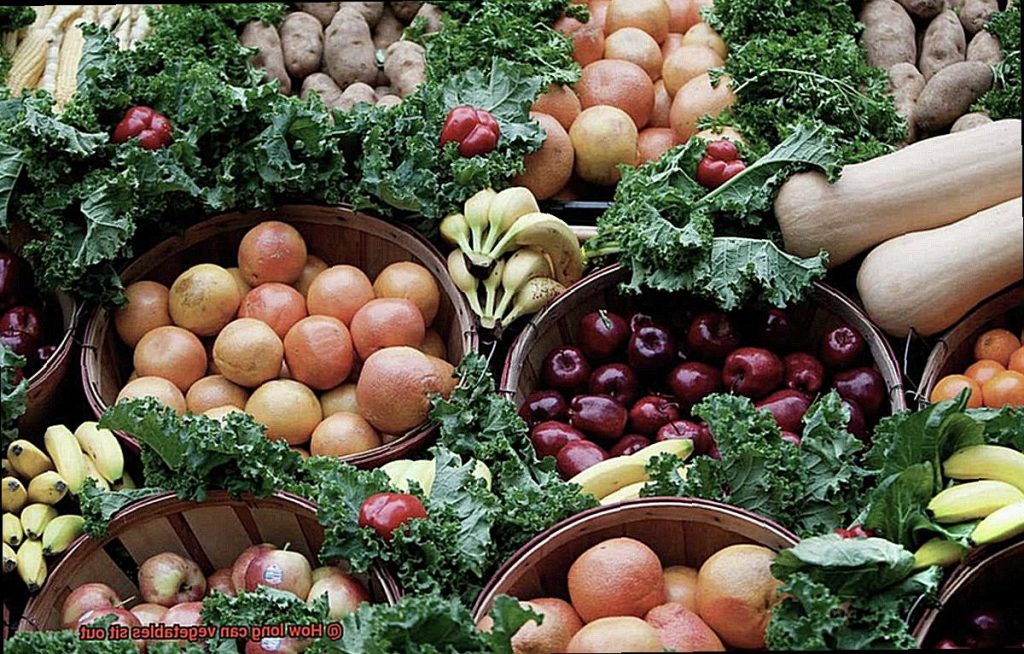Picture this: you’re at a party and there’s a gorgeous bowl of freshly cut vegetables sitting on the table. The vibrant colors and crisp textures are irresistible, but as the night goes on and guests come and go, you start to wonder – how long have these veggies been out, and are they still safe to eat?
The debate over how long vegetables can safely sit out has been raging for years. Some swear that as long as they’re kept at room temperature and not left out for too long, they’re good to go. Others argue that any time spent outside of the fridge could wreak havoc on the delicate balance of nutrients and bacteria in fresh veggies.
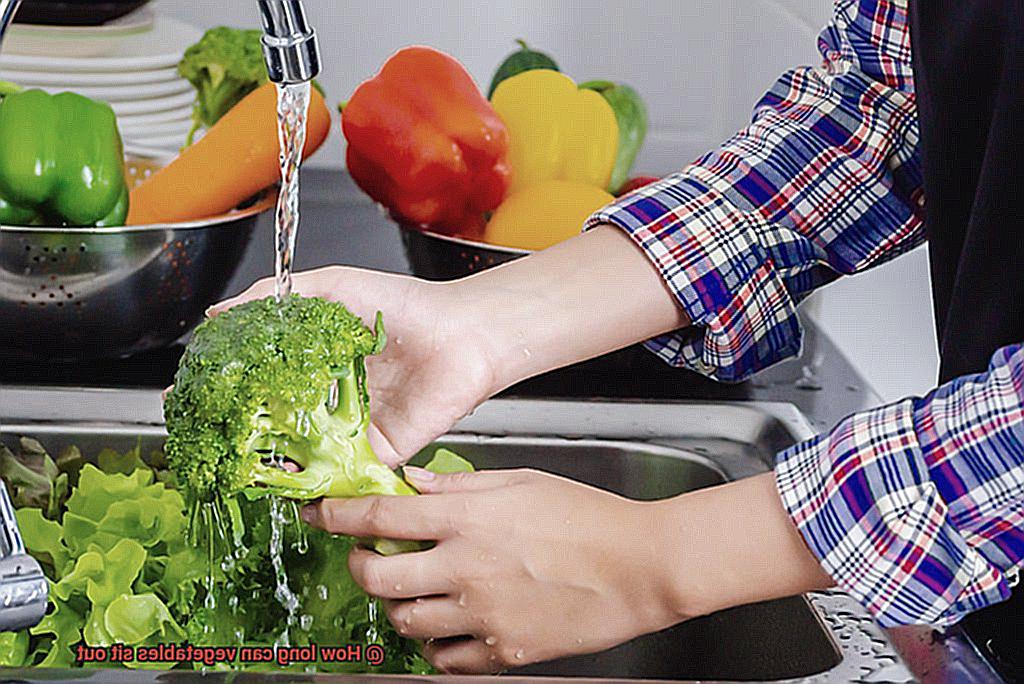
In this blog post, we’ll explore the science behind how long vegetables can sit out, and what factors can impact their safety and flavor. We’ll also share some tips for storing and serving veggies, so you can ensure your next party platter is both delicious and safe. Whether you’re planning a potluck with friends or just want to keep your family healthy, read on to learn more about how long vegetables can sit out without spoiling.
Contents
The Danger Zone: Bacteria Growth in the Temperature Range of 40°F to 140°F
This is where bacteria thrive most rapidly, and any food left in this range for too long can become a breeding ground for harmful bacteria.
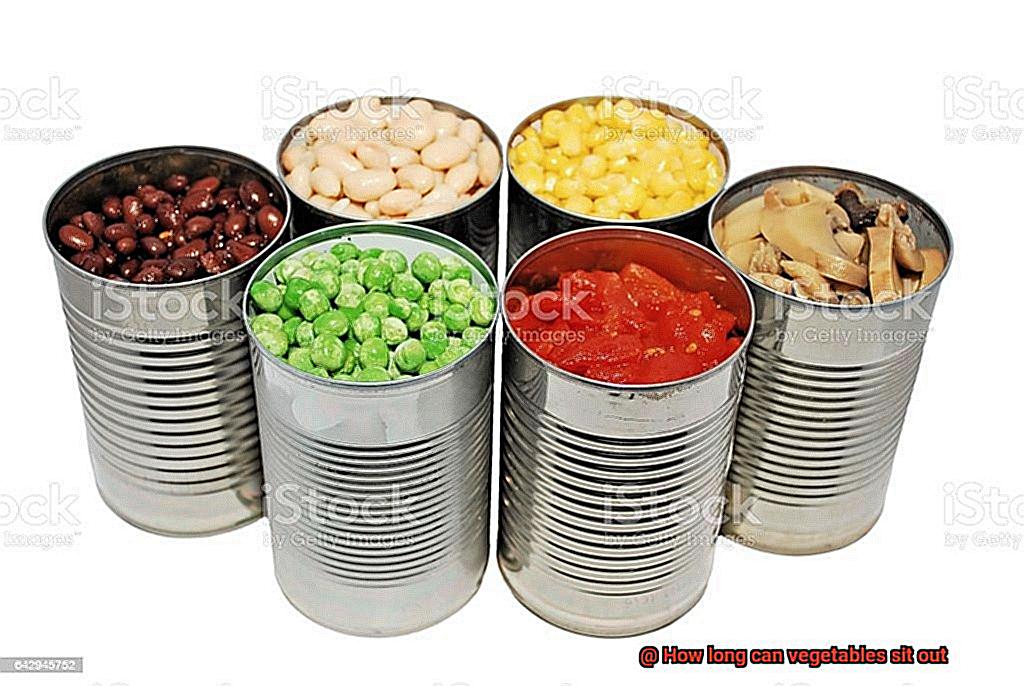
Vegetables are no exception to this rule, and some are even more susceptible to bacterial growth due to their high water content. Cucumbers, tomatoes, and lettuce are particularly prone to bacterial growth if they are left out at room temperature for too long.
To minimize the risk of bacterial growth in vegetables, it is crucial to keep them refrigerated at a temperature below 40°F until ready to use. If you plan on serving vegetables at room temperature, it is best to keep them out of the Danger Zone for no more than two hours before storing them back in the refrigerator. However, different factors such as humidity, air temperature, and the type of vegetable can affect how long vegetables can sit out. Therefore, it is always best to err on the side of caution and follow the two-hour rule.
Cross-contamination is another critical factor to consider when handling vegetables. Using separate cutting boards and utensils for raw and cooked vegetables can help prevent the spread of harmful bacteria.
How Long Can Raw Vegetables Sit Out at Room Temperature?
One common question that arises is how long raw vegetables can sit out at room temperature. Let me guide you through the ins and outs of vegetable storage to keep your snacks fresh and healthy.
First things first, let’s tackle the critical issue – how long can raw vegetables sit out at room temperature? The general rule is that most raw vegetables can withstand up to two hours at room temperature before they need refrigeration. However, if the temperature exceeds 90°F, this time frame is significantly shorter.
But don’t be fooled by this two-hour window; different vegetables have varying degrees of susceptibility to bacterial growth and spoilage. For instance, leafy greens and sprouts are more prone to bacterial contamination than other vegetables. So it’s crucial to refrigerate them within an hour of being cut or prepared.
Moreover, pre-cut or pre-packaged vegetables come with an expiration date that must be followed. These should also be kept refrigerated until ready to consume. Cross-contamination can occur between different types of vegetables when stored together in the same container, so it’s best to keep them separate.
Leaving raw vegetables out at room temperature for too long can cause foodborne illnesses as they become a breeding ground for bacteria. The longer they sit out, the higher the risk of contamination. Therefore, it’s essential to refrigerate raw veggies as soon as possible.
In summary, here are some key takeaways:
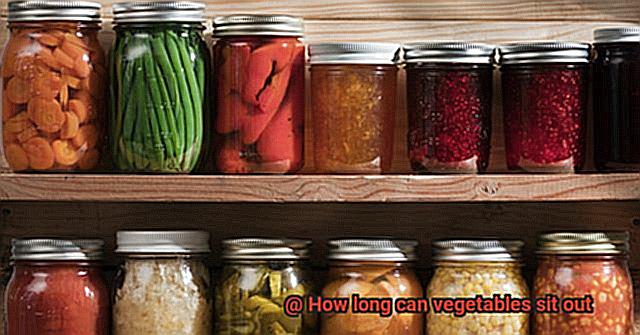
- Raw vegetables should not be left out at room temperature for more than two hours.
- This time frame is even shorter in warmer temperatures.
- Leafy greens and sprouts are more susceptible to bacterial growth and spoilage.
- Pre-cut or pre-packaged vegetables should be consumed within their expiration date.
- It’s best to keep different types of vegetables separate to avoid cross-contamination.
Handling Leafy Greens and Sprouts with Care
These vegetables are prime targets for harmful bacteria such as E. coli and Salmonella, due to their moisture and nutrient-rich growing environments.
To ensure the safety of your leafy greens and sprouts, it’s essential to take certain precautions. First and foremost, always wash them thoroughly before use. Rinse them under cold running water, removing any dirt or debris present. Drying them completely with a clean paper towel or kitchen towel is also crucial.
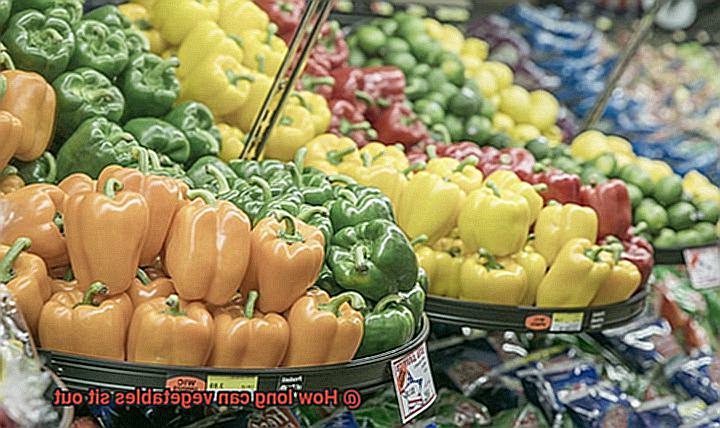
Proper storage is just as vital as washing. Keep your leafy greens and sprouts refrigerated at temperatures between 34°F and 40°F to slow down bacterial growth and extend their shelf life. Be sure to store them separately from raw meat, poultry, and seafood to prevent cross-contamination.
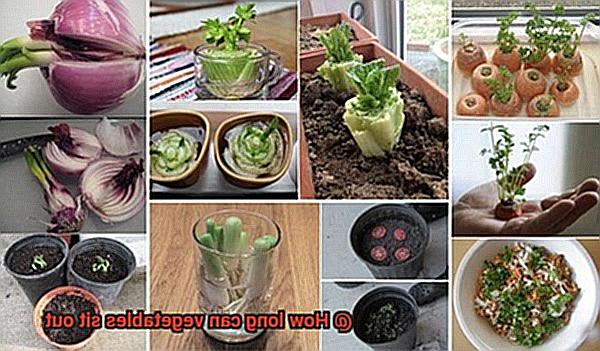
Paying attention to expiration dates is also important. While leafy greens may look fresh for a few days after purchase, they can spoil quickly if left unrefrigerated. As a general rule of thumb, consume leafy greens within 3-5 days of purchase and sprouts within 2-3 days.
In addition to these precautions, always follow proper food safety guidelines. Wash your hands thoroughly before handling any food products. By taking these simple steps when handling leafy greens and sprouts, you can enjoy their health benefits without worrying about harmful bacteria.
To sum up, here are some key points to remember:
- Wash leafy greens and sprouts thoroughly with cold running water.
- Dry them completely using a clean paper towel or kitchen towel.
- Store them refrigerated at temperatures between 34°F and 40°F.
- Store them separately from raw meat, poultry, and seafood.
- Consume leafy greens within 3-5 days of purchase and sprouts within 2-3 days.
- Wash your hands thoroughly before handling any food products.
Grilling Vegetables Safely
Grilling vegetables is a fantastic way to enjoy the summer season while keeping your diet healthy and balanced. However, it’s crucial to prioritize safety when cooking perishable foods like vegetables. As an expert on this topic, I can tell you that keeping your veggies at the right temperature is critical to ensure safe grilling.
Firstly, it’s essential to keep your vegetables refrigerated until just before you’re ready to start cooking. Perishable foods like vegetables should not be left out at room temperature for more than two hours. So, whether you’re preparing for a grill-out or barbecue, be sure to keep them in a cooler with plenty of ice packs to keep them at a safe temperature. Different types of vegetables may have different shelf lives when left out at room temperature. Leafy greens like spinach and lettuce may wilt and spoil more quickly than heartier vegetables like potatoes or carrots. Therefore, it’s vital to be mindful of how long your veggies have been sitting out.
Another factor to consider when grilling vegetables safely is how you store them before cooking. While it’s necessary to wash your vegetables thoroughly before grilling, some veggies may need extra attention. For example, mushrooms can absorb water easily, so it’s best to only wash them right before grilling and not soak them in water beforehand.
When grilling vegetables, it’s also crucial to clean your grill properly. Residue from meat or other foods left on the grill can contaminate your veggies. Therefore, cleaning the grill with a brush and using foil or a vegetable basket can help prevent cross-contamination and ensure safe grilling.
Marinating Vegetables Before Grilling
Look no further than marinating your vegetables before grilling. Marinating is an excellent way to add a burst of flavor to your dish. But, before you start marinating, it’s crucial to understand how to do it safely.
First things first, let’s talk about food safety. Vegetables can quickly become a breeding ground for bacteria when left at room temperature. To prevent this, marinate your vegetables in the refrigerator, where the temperature is below 40°F (4°C). This ensures that your veggies remain safe to eat and free from any harmful bacteria.
Another essential factor to consider is the amount of time you marinate your vegetables. The ideal marinating time for veggies is between 30 minutes and two hours. Over-marinating can lead to mushy vegetables, so be sure to stick within this time frame.
Once you’ve finished marinating your veggies, it’s crucial to remove them from the marinade and discard any leftover liquid. This helps prevent cross-contamination and ensures that your grilled veggies are safe to eat.
If you plan on grilling your vegetables outside, keep them in a cooler with ice until ready to cook. This maintains their freshness and reduces the risk of bacterial growth.
Here are some tips for marinating vegetables:
- Choose the right marinade: Use a marinade that complements the flavor of the vegetable.
- Cut the vegetables into similar sizes: This ensures that they cook evenly and absorb the marinade evenly.
- Use a sealable container or bag: This helps keep the marinade contained and prevents leaks.
- Massage the marinade into the vegetables: This ensures that they are evenly coated with flavor.
How Long Can Cooked Vegetables Sit Out at Room Temperature?
As a health-conscious individual, you likely know that cooked vegetables are a vital part of a balanced diet. Whether you’re meal prepping for the week ahead or preparing a tasty side dish for dinner, it’s essential to understand how long cooked vegetables can sit out at room temperature before they become a breeding ground for harmful bacteria.
The “danger zone” is the temperature range between 40°F and 140°F, which is where bacteria responsible for food poisoning thrive. When cooked vegetables are left out at room temperature for more than two hours, they can become contaminated with these harmful bacteria. Therefore, it’s crucial to refrigerate cooked vegetables within two hours of cooking to prevent bacterial growth and foodborne illness.
But what if you’re planning an outdoor event or picnic during the sweltering summer months? In this case, the time limit decreases to one hour if the ambient temperature is above 90°F. It’s wise to keep your cooked veggies chilled until you’re ready to serve them to avoid the risk of food poisoning.
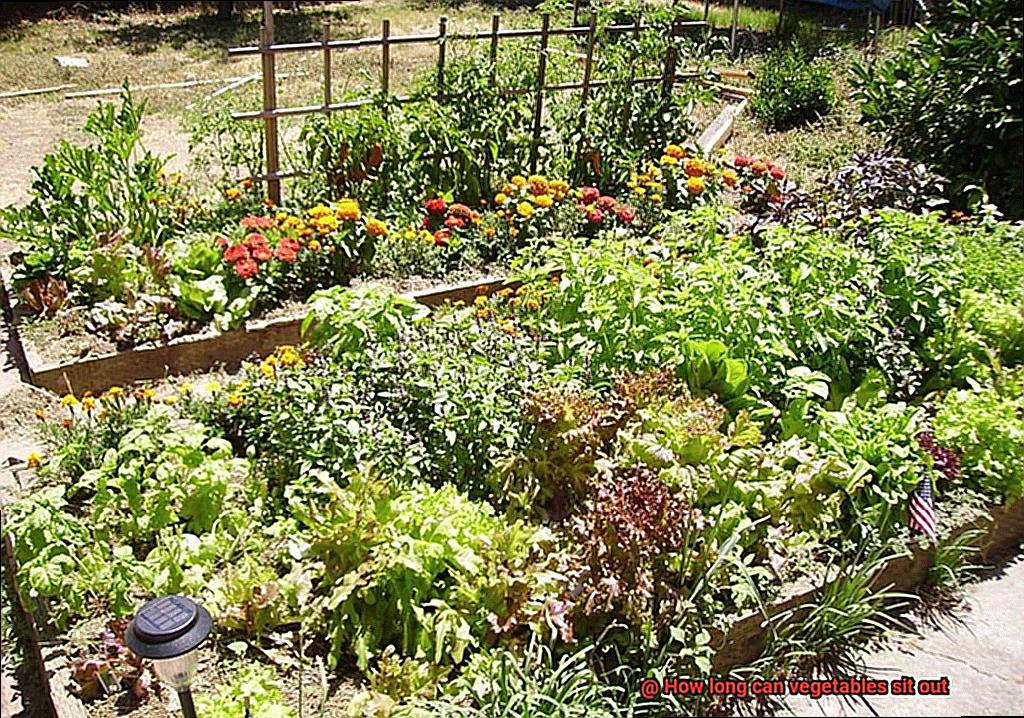
It’s better to be safe than sorry when it comes to food safety. If you’re unsure how long your cooked vegetables have been sitting out at room temperature, it’s best to throw them away and prepare a fresh batch instead of risking illness. It’s also worth noting that reheating cooked vegetables doesn’t eliminate all bacteria, so proper storage from the beginning is critical.
Here are some key takeaways to remember:
Keeping Cooked Vegetables Safe During Parties or Gatherings
As you plan your next party or gathering, don’t overlook the importance of keeping your cooked vegetables safe and delicious for your guests. Cooked vegetables are a popular side dish, but they can also be a breeding ground for bacteria if not stored properly. So, how can you ensure that your cooked veggies stay safe while still being tasty? Let’s explore some tips and tricks to keep in mind.
Firstly, it’s crucial to remember the temperature danger zone. Cooked vegetables should never be left out of the fridge for more than two hours, or one hour if the temperature outside is above 90°F. This means that serving cooked vegetables in small portions and replacing them frequently with fresh ones is ideal. To keep them fresh for longer periods, you can place them in a chafing dish or slow cooker on low heat.
If you’re serving cooked vegetables buffet-style, use shallow pans and ice baths to keep them cool. This will prevent them from reaching the temperature danger zone and becoming unsafe to eat. Don’t forget to label the dishes with the time they were prepared and when they need to be discarded.
But what if you have leftovers? Unfortunately, reheating cooked vegetables does not make them safe to eat if they’ve been sitting out for too long. Once they’ve been left out for over two hours, it’s best to discard them to avoid any potential foodborne illnesses.
To summarize, keeping cooked vegetables safe during parties or gatherings requires vigilance and a little bit of planning. Here’s a checklist of tips to keep in mind:
- Keep cooked vegetables out of the temperature danger zone (40°F – 140°F)
- Serve cooked vegetables in small portions
- Replace cooked vegetables frequently with fresh ones
- Use a chafing dish or slow cooker on low heat to keep cooked veggies fresh
- Use shallow pans and ice baths when serving cooked vegetables buffet-style
- Label dishes with preparation time and discard time
- Discard cooked vegetables that have been left out for over two hours
y8V7kmj3T9o” >
Conclusion
In conclusion, knowing how long vegetables can sit out is crucial for maintaining food safety and promoting good health. While most raw veggies can endure up to two hours at room temperature, this time frame dwindles in warmer weather. Leafy greens and sprouts are especially vulnerable to bacterial growth and spoilage, so refrigeration within an hour of preparation is essential.
When grilling vegetables, it’s imperative to prioritize safety by keeping them at the right temperature. Perishable foods should never be left out for more than two hours, so pack them in a cooler with plenty of ice packs until ready to cook. Different types of veggies may have varying shelf lives when left out at room temperature, so keep track of how long they’ve been sitting out.
Finally, keeping cooked vegetables fresh during gatherings requires careful planning and vigilance. Cooked veggies shouldn’t be left out for more than two hours or one hour if the temperature outside exceeds 90°F. To extend their freshness, use chafing dishes or slow cookers on low heat, serve buffet-style using shallow pans and ice baths, label dishes with preparation time and discard time, and toss any cooked veggies that have been sitting out for over two hours.
By following these tips for storing and serving veggies safely, you can ensure your next party platter is both delectable and healthy.

